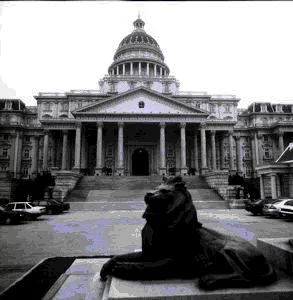Crop and Click Episode 5 – The Deception of Modern Architecture

As individuals living in a technologically advanced society, we have access to images on a daily basis and are trained to believe everything before our eyes. Rarely do we stop and question the intentionality behind an image or its neutrality, making us easy subjects for manipulation.
This podcast examines the ever-changing role of the camera in China from the start of the Mao Zedong era (1949 – 1976) to the present. While this history is not linear, it is clear the camera has been used as a tool for political messaging. Our chosen photograph and the focus of this episode Government 04, Shanghai taken by Luo Yongjin in 2006 materializes this notion through its portrayal of a Chinese government building. At first glance, the structure looks remarkably similar to the U.S. Capitol, embodying the growth of China’s influence on the international level. Ultimately serving as commentary for the Chinese government’s illegitimate spending methods on Westernizing spaces rather than improving the lives of everyday citizens. How and why you might ask? Well, tune in as we examine just how powerful the documentary photograph really is.
Click here for a transcription and bibliography as well as images of the work’s discussed in today’s episode.
This podcast is part of the Crop and Click series featuring student research on documentary photography from our collection. Click here for a portfolio of all the works discussed in the series.
Hosted and produced by Madeline Cournoyer and Noor Hoban. Cover art by Lucy Sherman ’23.